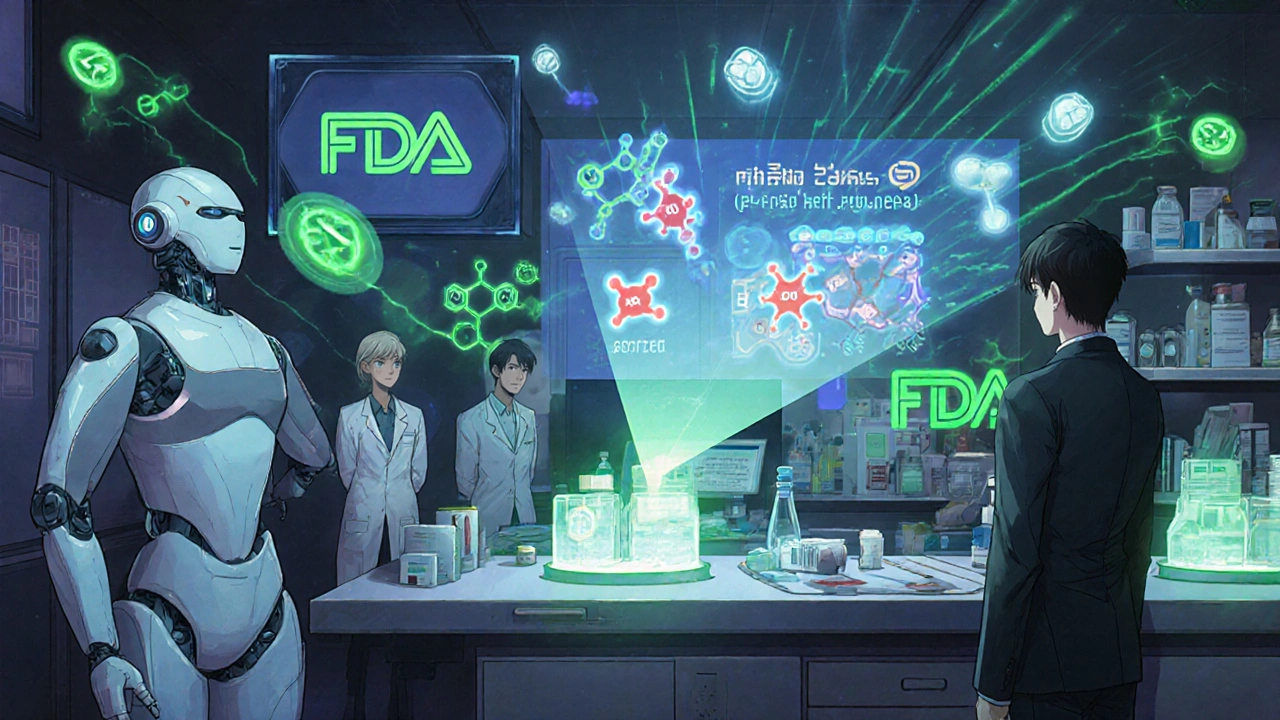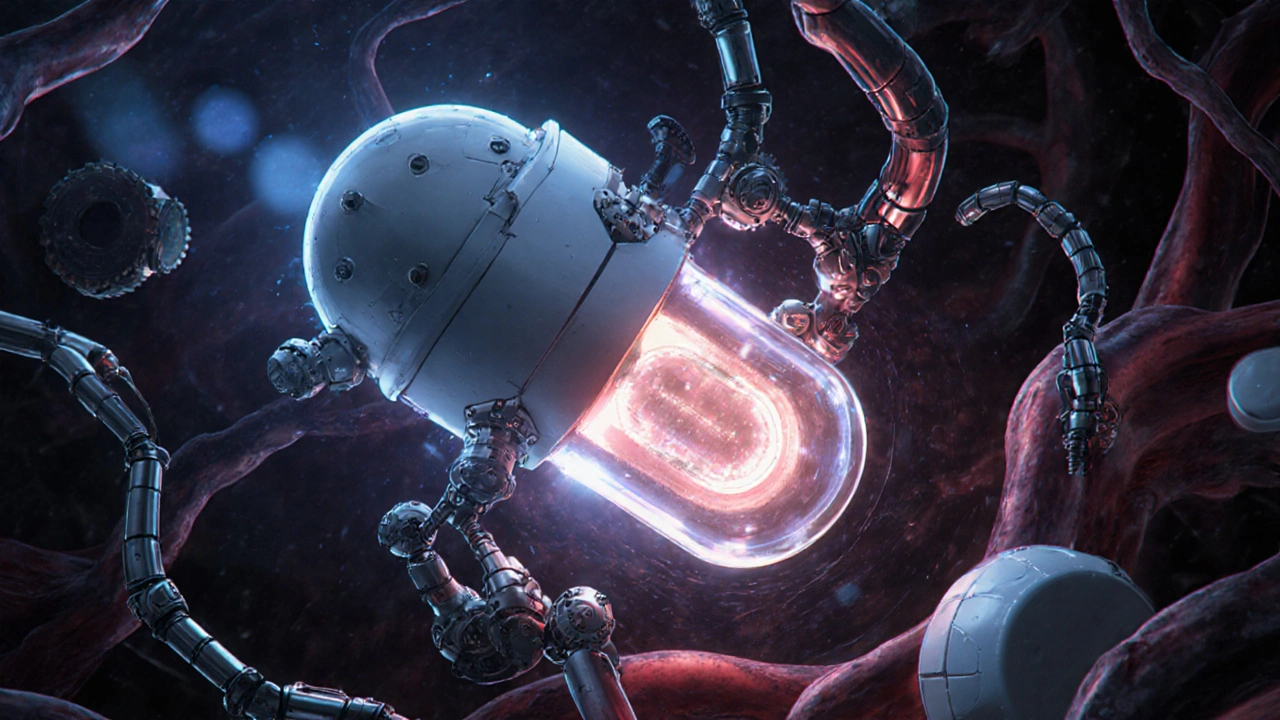When you take a pill, you might think you’re only getting the medicine you need - the thing that treats your headache, lowers your blood pressure, or fights an infection. But that pill also contains a bunch of other stuff you’ve probably never heard of. These are the inactive ingredients. And while they don’t cure anything, they can still affect how you feel - sometimes in ways you wouldn’t expect.
What exactly is an active ingredient?
The active ingredient is the part of the medicine that actually does the work. It’s the chemical that interacts with your body to create the desired effect. For example, in Tylenol, the active ingredient is acetaminophen. In Advil, it’s ibuprofen. In Lipitor, it’s atorvastatin. These are the only parts of the pill that are required to prove they work in clinical trials. The FDA demands proof of safety and effectiveness before approving any active ingredient. That’s why drug companies spend billions and take over a decade to bring a new one to market. Most new active ingredients fail - over 90% don’t make it past testing.What are inactive ingredients, really?
Inactive ingredients, also called excipients, are everything else in the pill. They don’t treat your condition. But they’re not just filler. They’re essential for the medicine to work properly. Think of them as the support team. Without them, the active ingredient wouldn’t reach your bloodstream, wouldn’t stay stable, or might even be impossible to swallow. Common inactive ingredients include:- Lactose - a sugar used as a filler. In a typical tablet, it can make up 70% or more of the weight.
- Microcrystalline cellulose - a plant-based binder that holds the tablet together.
- Magnesium stearate - a lubricant that keeps the medicine from sticking to manufacturing machines.
- Hydroxypropyl methylcellulose - a coating that helps the pill dissolve at the right time in your gut.
- Propyl gallate - a preservative that stops the medicine from spoiling.
- D&C Red 7 calcium lake - a red dye used to make pills look different from others.
These ingredients are chosen because they’re generally recognized as safe (GRAS) by the FDA. But that doesn’t mean they’re harmless for everyone.
Why the difference matters more than you think
You might assume that if the active ingredient is the same, all versions of a drug are identical. That’s not true. Two pills with the same active ingredient - say, generic ibuprofen - can behave very differently in your body because of their inactive ingredients. Take fenofibrate, a cholesterol-lowering drug. One version with specific surfactants increased absorption by 35% compared to an older version. That’s not a small difference. It means one pill might work, and another might not - even though both have the same active ingredient. And then there’s the issue of allergies and sensitivities. About 65% of people worldwide have trouble digesting lactose. If your medication uses lactose as a filler, you could end up with bloating, gas, or diarrhea - not because the medicine isn’t working, but because your body can’t handle the inactive ingredient. Celiac disease affects about 1% of people in Australia and the U.S. Those individuals must avoid gluten. Some medications use wheat starch as a binder. That’s not listed as an allergen on the label unless it’s intentional. But it’s still there. And it can trigger reactions. Even dyes matter. Some people report headaches or rashes after taking brightly colored pills. Studies have linked certain food dyes used in medicines - like Red 7 or Yellow 5 - to sensitivity reactions in susceptible individuals.
The myth of ‘inactive’
The term ‘inactive’ is misleading. A 2021 study from the University of California, San Francisco, and Novartis tested 639 FDA-approved inactive ingredients against over 3,000 human proteins. They found that 14% of these ‘inactive’ substances had biological activity. That means they weren’t just sitting there. They were interacting with your body’s systems. One compound, propyl gallate, a common preservative, bound strongly to proteins involved in inflammation. Another, D&C Red 7, interacted with receptors linked to hormone regulation. These aren’t just random findings. They’re signals that some excipients might be influencing your health in ways we’ve ignored for decades. The FDA took notice. In 2022, they launched the Excipient Safety Initiative, investing $4.2 million to study these interactions more deeply. Now, manufacturers are required to screen excipients for biological activity - especially in long-term or high-dose medications.What this means for you
If you’ve ever wondered why one generic version of your medication makes you feel different than another, the answer might be in the inactive ingredients. Pharmacists see this all the time. In 2022, 22% of medication switches in the U.S. weren’t because the active ingredient failed - they were because the patient couldn’t tolerate the filler, dye, or preservative. Here’s what you can do:- Always read the ingredient list on your medication label - even if it’s a generic.
- If you have known allergies (lactose, gluten, sulfites, dyes), ask your pharmacist for a version without them.
- Don’t assume all generics are the same. Ask if there are multiple formulations available.
- Use the FDA’s Inactive Ingredient Database (available online) to check what’s allowed in your dosage form.
Doctors and pharmacists are getting better at this. Australia started requiring prescriptions to list the active ingredient by name in 2020. In the U.S., active ingredient prescribing has increased by 37% since 2017. That means you’re more likely to be prescribed by chemical name - not brand - so you can shop around for the formulation that suits you best.

What’s next?
The future of medicine isn’t just about better drugs - it’s about better delivery. Scientists are using AI to predict how excipients will behave in the body before they’re even made. Some companies are replacing traditional fillers with plant-based alternatives that are less likely to cause reactions. Others are developing ‘smart coatings’ that dissolve only in specific parts of the gut, reducing side effects. The term ‘inactive ingredient’ may soon disappear from labels. Experts are pushing for terms like ‘functional excipients’ or ‘delivery aids’ - names that reflect their real role, not their outdated label. For now, the message is clear: your medicine isn’t just what’s listed as the active ingredient. The rest matters too. Ignoring it could mean you’re not getting the full benefit - or worse, you’re getting side effects you didn’t sign up for.Frequently Asked Questions
Are inactive ingredients really safe?
Yes - for most people, at the doses used in medications. The FDA requires that inactive ingredients be generally recognized as safe (GRAS). But ‘safe for most’ doesn’t mean safe for everyone. People with allergies, sensitivities, or chronic conditions can react to things like lactose, gluten, dyes, or preservatives. About 0.5% of all reported adverse drug reactions are linked to inactive ingredients, according to FDA data from 2020-2022.
Can inactive ingredients affect how well my medicine works?
Absolutely. The wrong filler or coating can stop your medicine from dissolving properly. For example, fenofibrate formulations with specific surfactants increased absorption by 35% compared to older versions. If your body can’t absorb the active ingredient, the medicine won’t work - even if the dose is correct.
Why don’t all generic drugs have the same inactive ingredients?
Manufacturers choose different excipients based on cost, availability, and how they want the drug to perform. There’s no rule saying generics must match the brand-name version’s inactive ingredients - only that they must deliver the same amount of active ingredient into your bloodstream. That’s why two generics with the same active ingredient can still feel different to you.
How do I find out what’s in my medication?
Check the packaging - over-the-counter meds list inactive ingredients right on the box. For prescriptions, look in the patient information leaflet inside the bottle. You can also ask your pharmacist or search the FDA’s Inactive Ingredient Database using the drug name or active ingredient. Many pharmacies now offer digital access to this info through their apps.
Should I avoid all generics because of inactive ingredients?
No. Most generics are safe and effective. But if you’ve had a bad reaction to one generic, don’t assume the next one will be the same. Talk to your pharmacist. They can help you find a version with different fillers or coatings. Sometimes switching to a different brand or manufacturer solves the problem.

Sachin Agnihotri
Whoa, I never thought about how lactose in my pills could be giving me bloating-turns out I’ve been blaming my curry all these years. 😅
Diana Askew
They’re hiding this stuff on purpose. Big Pharma doesn’t want you to know your pills are full of toxic dyes and GMO filler. They’re poisoning you slowly. 🤫🔴
King Property
LOL you guys are acting like this is news. I’ve been reading the tiny print on my prescriptions since 2015. The FDA’s ‘GRAS’ list is a joke-half those ingredients are one step away from industrial solvents. If you’re not checking the excipients, you’re not being responsible. Period.
Yash Hemrajani
So you’re telling me my ‘generic’ headache pills are basically sugar cubes with a side of chemical drama? 🤦♂️ And I thought I was saving money. At least now I know why that one brand made me feel like I’d been hit by a truck. Not the medicine-the filler.
Pawittar Singh
Hey everyone-this is huge. If you’ve ever felt weird after switching generics, you’re not crazy. Talk to your pharmacist. Ask for the inactive ingredient list. They’ve got databases. It’s not hard. We can all be smarter about this together. 💪
Josh Evans
Just checked my blood pressure med-yep, lactose. That explains why I get gassy every time I take it. Thanks for the heads-up, OP. I’ll ask my doc about switching.
Allison Reed
This is such an important conversation. So many people suffer silently from side effects they don’t realize are linked to their medication’s fillers. Knowledge is power-and your body deserves better than guesswork.
Jacob Keil
the real truth is they dont want you to know this because then youd realize you dont need pills at all just eat some turmeric and meditate bro
Rosy Wilkens
Of course the FDA is ‘investigating’ now. That’s what they always do after 30 years of people getting sick. They’re not protecting you-they’re protecting profits. And don’t get me started on how they let dyes through that are banned in Europe. This is a global cover-up.
Andrea Jones
Wait-so you’re saying my weird rashes after taking blue pills might be from the dye? 😮 I thought I was allergic to seafood. Time to dig out that bottle and read the fine print… thanks for the nudge!
Justina Maynard
I once had a panic attack after taking a yellow capsule. Turns out it had Yellow 5. I thought I was losing my mind. Now I only take white pills. No dye. No drama. Just pure chemistry. And yes, I’ve Googled every excipient in my meds. No regrets.
Evelyn Salazar Garcia
So what? I take what my doctor gives me. Stop overthinking pills.
Clay Johnson
Truth is the system is broken. We treat medicine like a commodity. Not a science. Not a covenant with the body. Just a pill. Just a dose. Just another product. We’ve forgotten the body remembers everything.